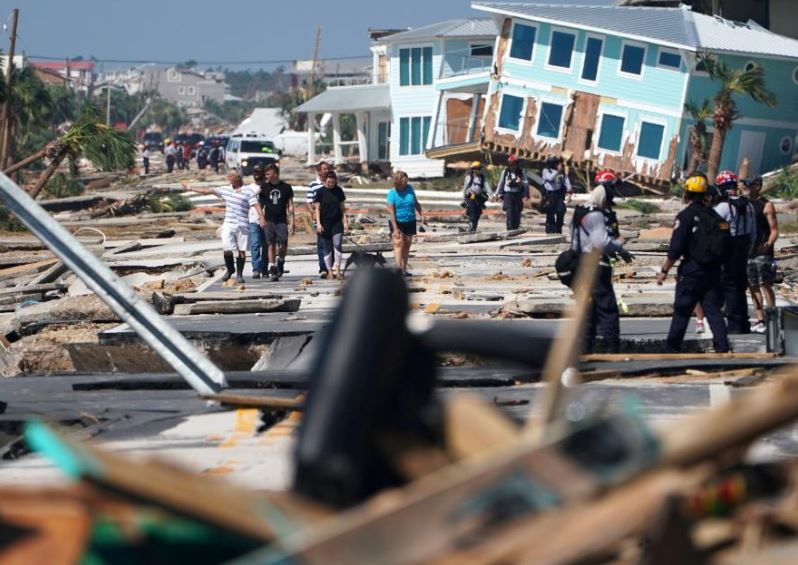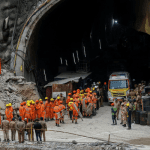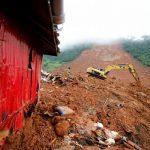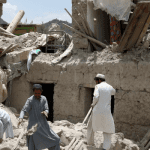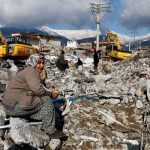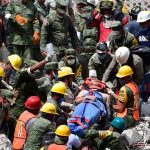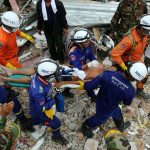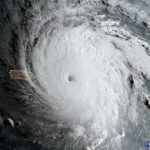Rescuers will pick through the rubble of ravaged beach communities searching for survivors on Friday after Michael, one of the most powerful hurricanes in U.S. history, slammed into the Florida Panhandle, killing at least seven people.
Michael struck Florida’s northwest coast near the small town of Mexico Beach on Wednesday afternoon with top sustained winds of 155 miles per hour (250 kph), pushing a wall of seawater inland and causing widespread flooding.
The storm tore entire neighborhoods apart, reducing homes and businesses to piles of wood and siding, damaging roads and leaving scenes of devastation that resembled the aftermath of a carpet-bombing operation.
U.S. Army personnel used heavy equipment to push a path through debris in Mexico Beach to allow rescuers through to search for trapped residents, survivors or casualties, as Blackhawk helicopters circled overhead. Rescuers from the Federal Emergency Management Agency (FEMA) used dogs, drones and GPS in the search.
Rescuers will pick through the rubble of ravaged beach communities searching for survivors on Friday after Michael, one of the most powerful hurricanes in U.S. history, slammed into the Florida Panhandle, killing at least seven people.
Michael struck Florida’s northwest coast near the small town of Mexico Beach on Wednesday afternoon with top sustained winds of 155 miles per hour (250 kph), pushing a wall of seawater inland and causing widespread flooding.
The storm tore entire neighborhoods apart, reducing homes and businesses to piles of wood and siding, damaging roads and leaving scenes of devastation that resembled the aftermath of a carpet-bombing operation.
U.S. Army personnel used heavy equipment to push a path through debris in Mexico Beach to allow rescuers through to search for trapped residents, survivors or casualties, as Blackhawk helicopters circled overhead. Rescuers from the Federal Emergency Management Agency (FEMA) used dogs, drones and GPS in the search.
Rescuers will pick through the rubble of ravaged beach communities searching for survivors on Friday after Michael, one of the most powerful hurricanes in U.S. history, slammed into the Florida Panhandle, killing at least seven people.
Michael struck Florida’s northwest coast near the small town of Mexico Beach on Wednesday afternoon with top sustained winds of 155 miles per hour (250 kph), pushing a wall of seawater inland and causing widespread flooding.
The storm tore entire neighborhoods apart, reducing homes and businesses to piles of wood and siding, damaging roads and leaving scenes of devastation that resembled the aftermath of a carpet-bombing operation.
U.S. Army personnel used heavy equipment to push a path through debris in Mexico Beach to allow rescuers through to search for trapped residents, survivors or casualties, as Blackhawk helicopters circled overhead. Rescuers from the Federal Emergency Management Agency (FEMA) used dogs, drones and GPS in the search.
Rescuers will pick through the rubble of ravaged beach communities searching for survivors on Friday after Michael, one of the most powerful hurricanes in U.S. history, slammed into the Florida Panhandle, killing at least seven people.
Michael struck Florida’s northwest coast near the small town of Mexico Beach on Wednesday afternoon with top sustained winds of 155 miles per hour (250 kph), pushing a wall of seawater inland and causing widespread flooding.
The storm tore entire neighborhoods apart, reducing homes and businesses to piles of wood and siding, damaging roads and leaving scenes of devastation that resembled the aftermath of a carpet-bombing operation.
U.S. Army personnel used heavy equipment to push a path through debris in Mexico Beach to allow rescuers through to search for trapped residents, survivors or casualties, as Blackhawk helicopters circled overhead. Rescuers from the Federal Emergency Management Agency (FEMA) used dogs, drones and GPS in the search.
Rescuers will pick through the rubble of ravaged beach communities searching for survivors on Friday after Michael, one of the most powerful hurricanes in U.S. history, slammed into the Florida Panhandle, killing at least seven people.
Michael struck Florida’s northwest coast near the small town of Mexico Beach on Wednesday afternoon with top sustained winds of 155 miles per hour (250 kph), pushing a wall of seawater inland and causing widespread flooding.
The storm tore entire neighborhoods apart, reducing homes and businesses to piles of wood and siding, damaging roads and leaving scenes of devastation that resembled the aftermath of a carpet-bombing operation.
U.S. Army personnel used heavy equipment to push a path through debris in Mexico Beach to allow rescuers through to search for trapped residents, survivors or casualties, as Blackhawk helicopters circled overhead. Rescuers from the Federal Emergency Management Agency (FEMA) used dogs, drones and GPS in the search.
Rescuers will pick through the rubble of ravaged beach communities searching for survivors on Friday after Michael, one of the most powerful hurricanes in U.S. history, slammed into the Florida Panhandle, killing at least seven people.
Michael struck Florida’s northwest coast near the small town of Mexico Beach on Wednesday afternoon with top sustained winds of 155 miles per hour (250 kph), pushing a wall of seawater inland and causing widespread flooding.
The storm tore entire neighborhoods apart, reducing homes and businesses to piles of wood and siding, damaging roads and leaving scenes of devastation that resembled the aftermath of a carpet-bombing operation.
U.S. Army personnel used heavy equipment to push a path through debris in Mexico Beach to allow rescuers through to search for trapped residents, survivors or casualties, as Blackhawk helicopters circled overhead. Rescuers from the Federal Emergency Management Agency (FEMA) used dogs, drones and GPS in the search.
Rescuers will pick through the rubble of ravaged beach communities searching for survivors on Friday after Michael, one of the most powerful hurricanes in U.S. history, slammed into the Florida Panhandle, killing at least seven people.
Michael struck Florida’s northwest coast near the small town of Mexico Beach on Wednesday afternoon with top sustained winds of 155 miles per hour (250 kph), pushing a wall of seawater inland and causing widespread flooding.
The storm tore entire neighborhoods apart, reducing homes and businesses to piles of wood and siding, damaging roads and leaving scenes of devastation that resembled the aftermath of a carpet-bombing operation.
U.S. Army personnel used heavy equipment to push a path through debris in Mexico Beach to allow rescuers through to search for trapped residents, survivors or casualties, as Blackhawk helicopters circled overhead. Rescuers from the Federal Emergency Management Agency (FEMA) used dogs, drones and GPS in the search.
Rescuers will pick through the rubble of ravaged beach communities searching for survivors on Friday after Michael, one of the most powerful hurricanes in U.S. history, slammed into the Florida Panhandle, killing at least seven people.
Michael struck Florida’s northwest coast near the small town of Mexico Beach on Wednesday afternoon with top sustained winds of 155 miles per hour (250 kph), pushing a wall of seawater inland and causing widespread flooding.
The storm tore entire neighborhoods apart, reducing homes and businesses to piles of wood and siding, damaging roads and leaving scenes of devastation that resembled the aftermath of a carpet-bombing operation.
U.S. Army personnel used heavy equipment to push a path through debris in Mexico Beach to allow rescuers through to search for trapped residents, survivors or casualties, as Blackhawk helicopters circled overhead. Rescuers from the Federal Emergency Management Agency (FEMA) used dogs, drones and GPS in the search.

